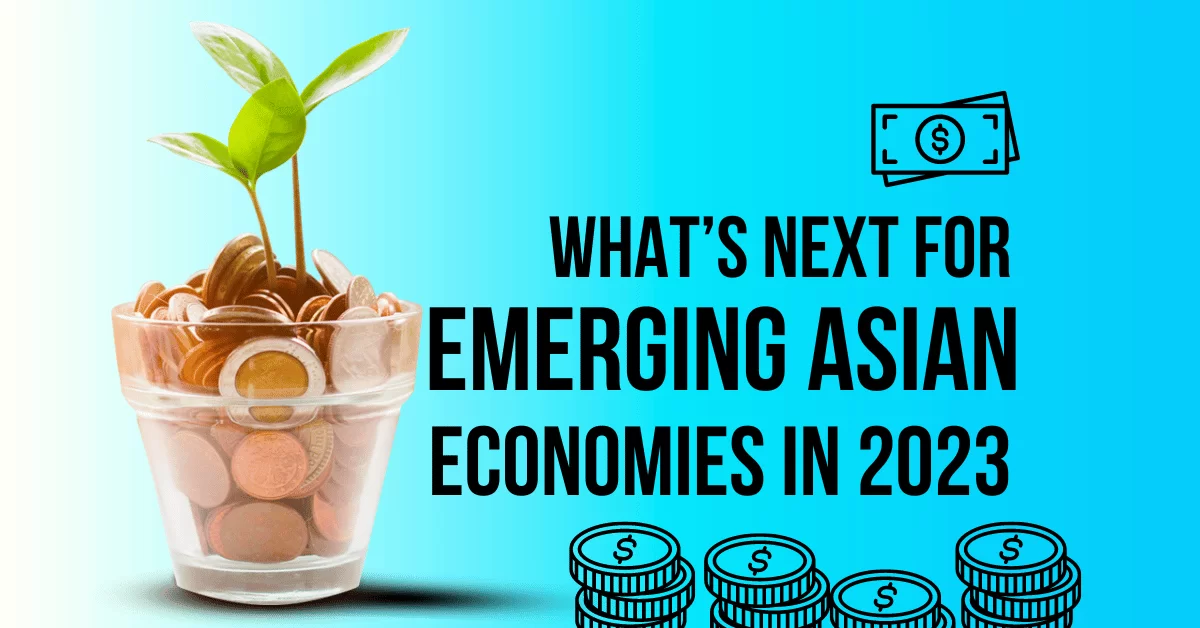It is difficult to predict with certainty what will happen to emerge Asian economies in 2023, as there are many factors that can affect their performance. Some of the key factors that could impact the economic prospects of emerging Asian economies include global economic conditions, domestic policy choices, and the impact of technological change. Additionally, natural disasters, conflicts, and other unexpected events can also have an impact on economic development.
That being said, many emerging Asian economies have strong fundamentals and are well-positioned to continue growing in the coming years. For example, many of these economies have large, young populations that can drive economic growth, as well as favorable demographics that can support the growth of the labor force. Additionally, many of these economies have developed strong manufacturing sectors and are becoming increasingly integrated into global supply chains, which can help to drive export-led growth.
Introduction
Emerging Asian economies are expected to continue their strong growth in 2023, with many of these countries well-positioned to capitalize on favorable demographic trends, strong manufacturing sectors, and increased integration into global supply chains.
One key factor driving economic growth in emerging Asian economies is the presence of large, young populations. These populations are not only a source of labor, but they also represent a growing consumer market that can drive demand for goods and services. Additionally, many emerging Asian economies have favorable demographic trends, with a growing labor force and relatively low dependency ratios, which can support economic growth.
Another factor that is expected to contribute to the economic success of emerging Asian economies is their strong manufacturing sectors. Many of these countries have developed strong capabilities in manufacturing, and are increasingly integrated into global supply chains. This has helped to drive export-led growth, as these countries are able to produce goods for markets around the world.
Technological change is also expected to play a role in the economic growth of emerging Asian economies. The adoption of new technologies can increase productivity, which can help to drive economic growth. Additionally, the development of new technologies can create new opportunities for businesses and entrepreneurs in these countries.
Finally, foreign investment is expected to remain strong in emerging Asian economies in 2023. Companies are attracted to the large and growing consumer markets in these countries and are increasingly seeking to tap into these markets through foreign investment. This can bring capital, technology, and expertise to these countries, which can help to support economic development.
Overall, the economic prospects for emerging Asian economies in 2023 are bright, with many of these countries well-positioned to continue their strong growth in the coming years.
Numerous economies in the region could experience turbulence next year, but some might also stand to gain as businesses diversify their investments away from the Chinese market.
The year 2022, when the world economy was expected to have recovered from the negative impacts of the COVID-19 epidemic, has been difficult for the economies of South and Southeast Asia.
Instead, the Russian invasion of Ukraine, along with other issues including surging prices, supply chain hiccups, and repeated COVID lockdowns in China, have dimmed development forecasts and hurt both businesses and households.
Trade-oriented ASEAN economies face headwinds
Rising import prices for gasoline, food and other items have led to economic crises in several nations and the depletion of their foreign exchange reserves.
The International Monetary Fund has already helped Pakistan and Sri Lanka in South Asia after they experienced debt crises and balance-of-payments issues.
In 2023, experts anticipate a difficult economic climate due to decreasing growth forecasts for the US, the eurozone, and China globally as well as tightening financial conditions.
The growth predictions for emerging Asia have all been lowered by the World Bank, IMF, and Asian Development Bank. Predictions indicate that slower global development would have a particularly negative impact on trade-oriented economies like Singapore, Thailand, Vietnam, and Malaysia.
The investment bank Natixis’ head economist for the Asia Pacific area, Alicia Garcia-Herrero, predicted that lower international demand and tighter monetary conditions will hinder regional development.
She said that “exports are starting to sag as external demand declines, and we foresee additional weakness in the next year,” pointing out that trade-driven countries like Malaysia and Vietnam had seen a contraction in November.
A similar opinion is held by Rajiv Biswas, the Asia Pacific Chief Economist at S&P Global Market Intelligence. He said that poor domestic demand in China and recessionary conditions in the US and EU will make manufacturing exports from the ASEAN region more difficult to sustain in 2023.
According to him, ASEAN nations like Malaysia, Singapore, and Thailand are likely to post modest economic growth in 2023, backed by ongoing domestic demand increase, albeit slowing.
Will lifting COVID restrictions boost China?
The region’s largest economy, China, is likewise anticipated to develop slowly in 2023; the ADB recently lowered its forecast for the country from 4.5% to 4.3%.
Both tight coronavirus regulations and a problem in the region’s enormous real estate market have had a significant negative impact on the Asian giant’s economy. Developers are defaulting on loans and finding it difficult to acquire money since Beijing implemented sweeping lending controls in 2020.
Beijing has made an effort to stimulate the economy by lowering important interest rates and injecting funds into the banking sector.
In addition, China this month unexpectedly ended its zero-COVID policy after years of intermittent lockdowns, extensive testing, long quarantines, and limitations on people’s freedom of movement.
While there are still certain limitations, there is some optimism that as China relaxes its stringent containment policies, domestic demand will increase in the second-largest economy in the world.
This ought to benefit Southeast Asian nations like Thailand which rely heavily on tourism.
Because there aren’t as many Chinese visitors, Garcia-Herrero said that ASEAN tourist arrivals are still below pre-COVID levels. “While we don’t anticipate Chinese visitors to visit ASEAN as frequently as they did before COVID, one would anticipate a boost should China open up,” the statement reads.
According to Biswas, the gradual resumption of international tourism has already been made possible by the reopening of international borders in several Asia-Pacific nations in 2022. “But in nations with substantial international tourist industries, including Thailand, Malaysia, Singapore, and the Philippines, momentum is anticipated to increase dramatically throughout 2023,” he predicted.
Will India’s economy buck the trend?
India, the second-largest economy in the region, is also having problems as a result of rising interest rates and a downturn in international commerce. In the meanwhile, rising gas and crude oil costs have made the trade balance worse.
The Reserve Bank of India has had to raise interest rates many times this year as a result of consumer inflation continually exceeding the central bank’s 2-6% goal range. This has caused borrowing prices to reach pre-pandemic levels.
According to Biswas, “continued economic expansion at a pace of 5.3% year-on-year is predicted for the 2023–24 financial year, with tighter monetary policy settings and lower external demand acting as constraints on economic development.”
India will have some challenges in the upcoming year, according to Garcia-Herrero, who cited tighter financial circumstances, weakened exports, and sluggish development momentum.
She stated, “We anticipate a slowdown in India’s GDP growth from 6.9% in 2022 to 6.3% year-over-year in 2023.”
Companies diversify from China
According to experts, businesses will keep diversifying their investments away from China in 2023 in order to prevent supply chain disruptions like those seen this year and amid rising geopolitical tensions between Beijing and the West. This tendency is anticipated to prove advantageous to certain ASEAN countries.
According to Garcia-Herrero, “Total FDI inflows data, which includes both greenfield investment and cross-border M&A flow, reveals a spike of foreign direct investment into India, Singapore, Malaysia, Indonesia, and Vietnam in 2022.”
“We anticipate that this trend will persist even as China gradually eases its zero-COVID limitations, boosting both capital inflow and headcount demand in the ASEAN and India region.”
How will be the economy in 2023?
Global economies will continue to experience a variety of macroeconomic challenges in 2023, including inflation, tighter financial conditions, and geopolitical risks. The pace of global economic development is predicted to continue to decelerate, while cities will see muted increases in consumer expenditure.
Will economies grow forever?
Without delving too further into the specifics, the answer to the original query is no. Any exponential expansion, whether it is in an economy or anything else, cannot continue indefinitely.
The transformation process is one of the most important things to think about. How big of an influence does this procedure have on the overall balance of the available resources as well as other side effects? (like climate, pollution, as well as poverty relief, and well-being of people and Countries.)
Please visit for more: Poha Talks


